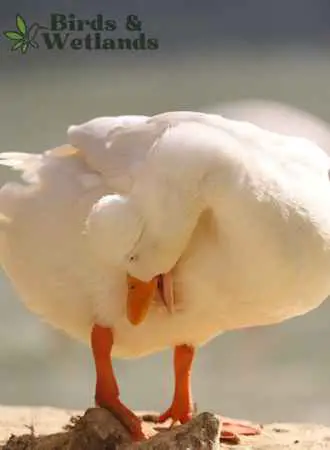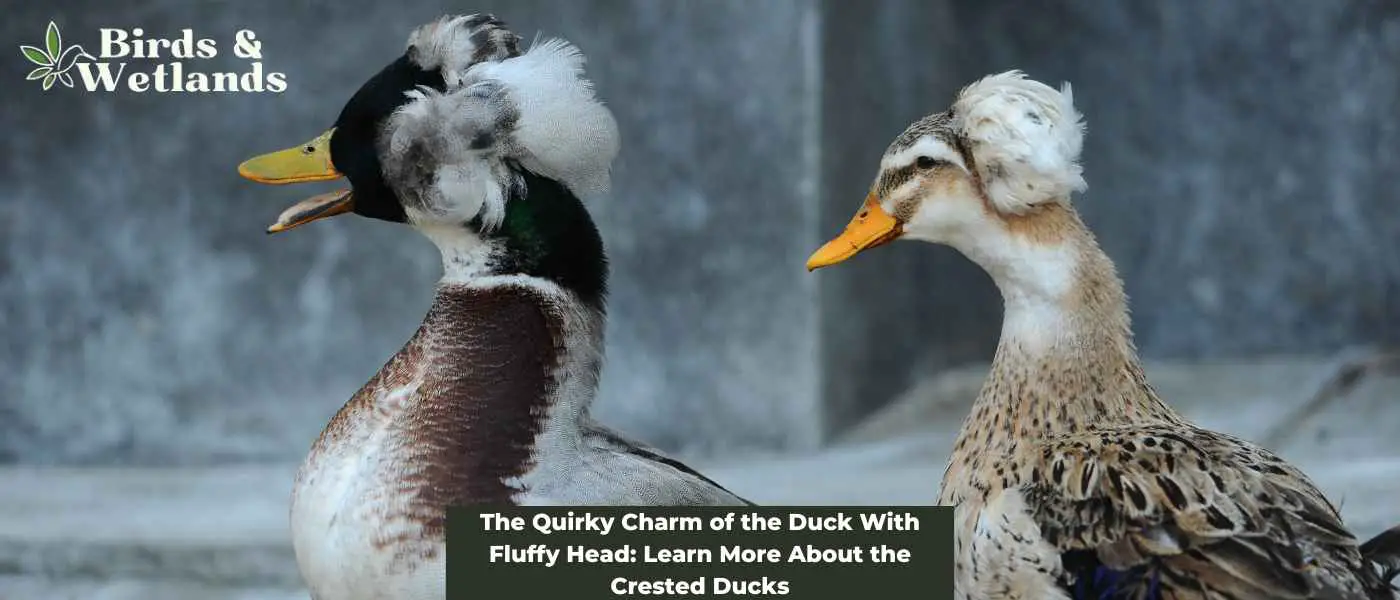Ducks are not usually the first animal that comes to mind when thinking of pets, but the Crested duck breed is an exception. With its unique appearance and interesting genetics, the Crested duck has garnered much attention in recent years as a pet and decoration.
Although this breed is less popular for showing due to its genetic challenges, it still holds a special place in the hearts of many duck enthusiasts. In this blog post, we’ll take a closer look at the fascinating Crested duck and what makes it so special.
History
The Crested duck breed has a history as intriguing and mysterious but they are believed to have descended from mallard ducks. While the exact origin of this unique breed is unknown, it is believed to have originated in the East Indies and brought to Europe by Dutch ships. Works of art from the 17th century by Dutch painters depicted ducks with similar appearance with the crested ducks.
In 1874, the white Crested duck was included in the American Standard of Perfection, recognizing it as a distinct and valuable breed. Over time, the Crested duck became recognized in other countries, including the United Kingdom by the British Standard of Perfection, where it was officially recognized in 1910.
In the late 20th century, a bantam variety was bred by John Hall and Roy Sutcliffe in the United Kingdom.
One of the defining features of the Crested duck is its distinctive crest, which is formed by a genetic mutation related to skull deformity. The crest is formed when the embryo develops a gap in the skull, and the gap fills with fatty tissue or “fat body”. This unusual genetic trait is a result of centuries of selective breeding.

Physical Appearance
The Crested duck breed, also known as the “duck with an afro,” is easily recognizable due to the large, afro-like crests on the top of their heads. These crests are located on the highest point of the duck’s head and are quite huge and “puffy” in appearance. The have a similar appearance with the Bali ducks.
The Crested duck’s appearance is further enhanced by their slightly arched and long necks, giving them an upright posture similar to Indian runner ducks.
Crested ducks have a medium size and come in two size varieties: the standard and the bantam (crested miniature). Standard crested ducks weigh two to six pounds, while the bantam variety may weigh less than two pounds.
Crested ducks can have feathers in different colors, such as white, black, gray, blue, or buff. However, the white-crested ducks are the most popular. The American Poultry Association only recognizes the white and black crested duck.
Not all Crested ducks will inherit the crest, making it a unique and valuable characteristic for those with it.
Crested ducks have light orange feet and beaks that complement their striking appearance.
The males have curled tails, while the females have straight tails. Nevertheless, males and females share a similar appearance, with males having slightly larger crests.
Behavior and Temperament
The Crested duck breed is known for its friendly and affable temperament. However, they can be shy and nervous in new environments. They are generally quiet birds and have a calm demeanor.
Crested ducks are popular for their friendly personalities, which make them ideal for backyard flocks. They are docile and easy to handle, but their shyness may require patience to warm up to their caretakers. However, they will become more outgoing and sociable once they feel comfortable.
They are graceful swimmers, and their ability to easily move through the water in the pond is truly remarkable. On land, they can be awkward and waddle comically. They may be vulnerable to predators because this bird species can’t really fly.
If allowed to free-range, Crested ducks are excellent at foraging for their own food. They are adept at finding insects, snails, and other small creatures to eat. They can survive on a varied diet that includes both vegetation and protein.

Egg Production
Crested ducks are good layers. While not as prolific as chickens and other poultry birds, Crested ducks are known to lay between 100 to 200 eggs annually, making them a good option for those looking for a steady supply of fresh eggs. The incubation period for these eggs is typically between 28 to 30 days.
It’s worth noting that pure breeders will not use their eggs for anything other than breeding, as they want to maintain the purity of the breed.
However, for those who use their eggs for consumption, Crested duck eggs are a great choice. These eggs are large and have a big yolk, which makes them ideal for baking. Additionally, many duck keepers believe that their eggs are richer and more nutritious than other ducks eggs, containing twice as much protein.

Breeding and Raising
Crested ducks are raised purely for ornamental purposes. Some keepers will raise them for their eggs, but rarely for their meat.
Breeding and raising crested ducks can be a challenging yet rewarding experience for beginner duck breeders. These ducks are unique in appearance, sporting a distinctive tuft of feathers on their heads, but they require special care and attention.
One of the challenges of breeding crested ducks is their susceptibility to certain health issues such as having a twisted neck. These ducks can be prone to seizures and other neurological problems that can result in early death. Furthermore, the duck’s deformity makes it extremely difficult for the female crested duck to mate, especially with a particularly aggressive drake.
Additionally, crested ducks are not as hardy as other duck breeds, and they are more susceptible to extreme weather conditions.
Breeding two crested ducks is a recipe for disaster. Typically, around 25% of crested to crested duck embryos die in the shell before reaching complete maturity so crested ducklings are not a guarantee.
Experienced breeders attempt to mitigate these challenges by employing a breeding strategy wherein a a heterozygous crested duck is bred into a non-crested duck. Even so, they are only successful 50% of the time.

Key Takeaways on Crested Ducks
- The Crested duck breed’s unique appearance makes them easily distinguishable from other duck breeds.
- Their afro-like crest, combined with their slightly arched necks and upright posture, gives them a distinct look that stands out in any flock.
- During incubation, the presence of the crested gene in these ducks is associated with a fatal condition. The formation of a hollow in the skull creates an opening through which fatty tissue emerges, ultimately leading to the development of feathers.
- Crested ducks are descendants of mallards.

